What Is Pier Foundation | Types of Drilled Piers | Advantages and Disadvantages of Drilled Pier Foundations
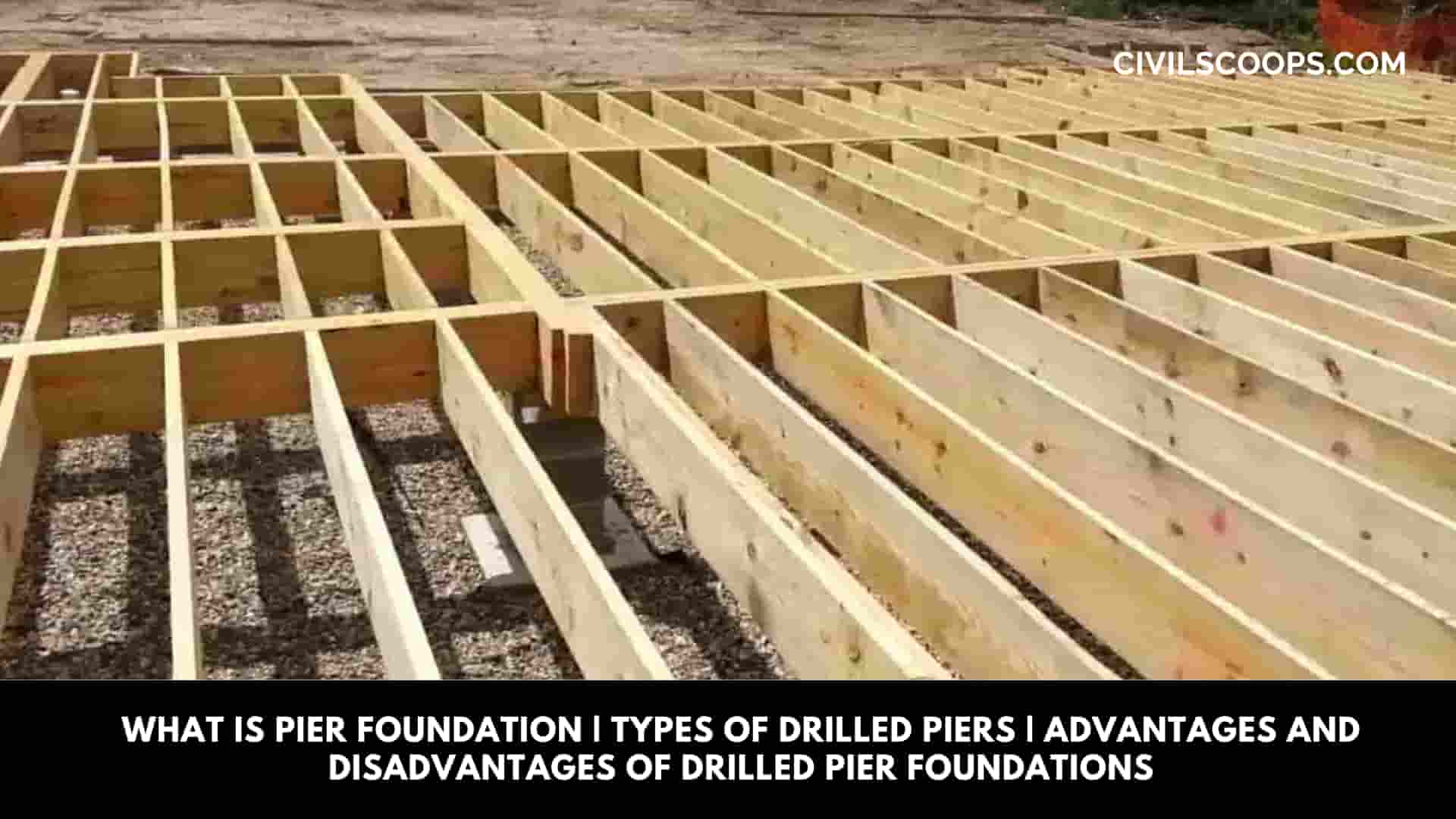
Table of Contents
What Is Pier Foundation?
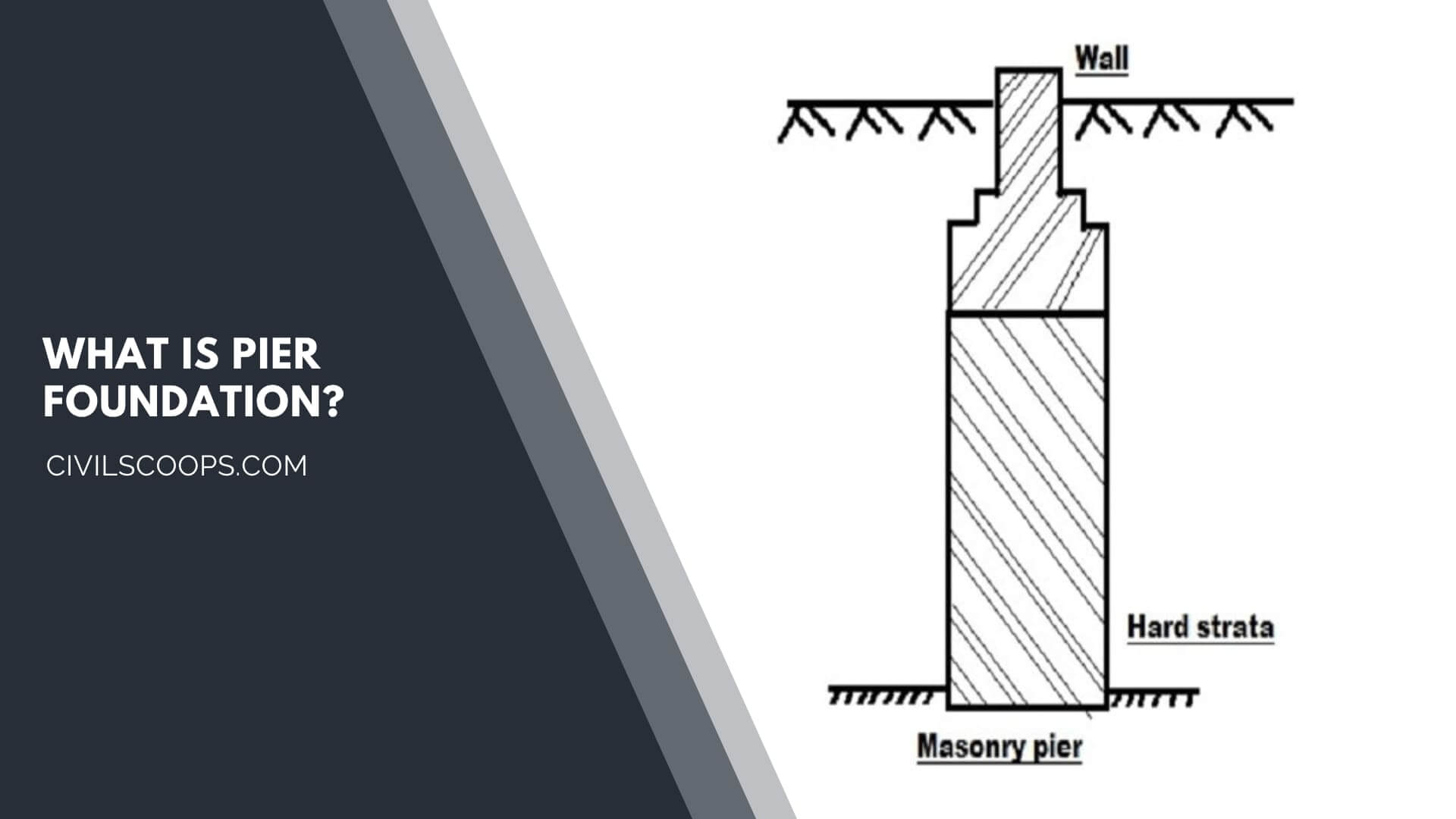
A pier foundation is a collection of large diameter cylindrical columns to support the superstructure and transfer large super-imposed loads to the firm strata below. It stood several feet above the ground. It is also known as “post foundation”.
or
Drilled pier foundations, the subject matter of this article, belong to the same category as pile foundations. Because piers and piles serve the same purpose, no sharp deviations can be made between the two.
The distinctions are based on the method of installation. A pile is installed by driving, a pier by excavating. Thus, a foundation unit installed in a drill-hole may also be called a bored cast-in-situ concrete pile.
Here, a distinction is made between a small diameter pile and a large diameter pile. A pile, cast-in-situ, with a diameter less than 0.75 m (or 2.5 ft) is sometimes called a small diameter pile.
A pile greater than this size is called a large diameter bored-cast-in-situ pile. The latter definition is used in most non-American countries whereas in the USA, such large-diameter bored piles are called drilled piers, drilled shafts, and sometimes drilled caissons.
Types of Drilled Piers
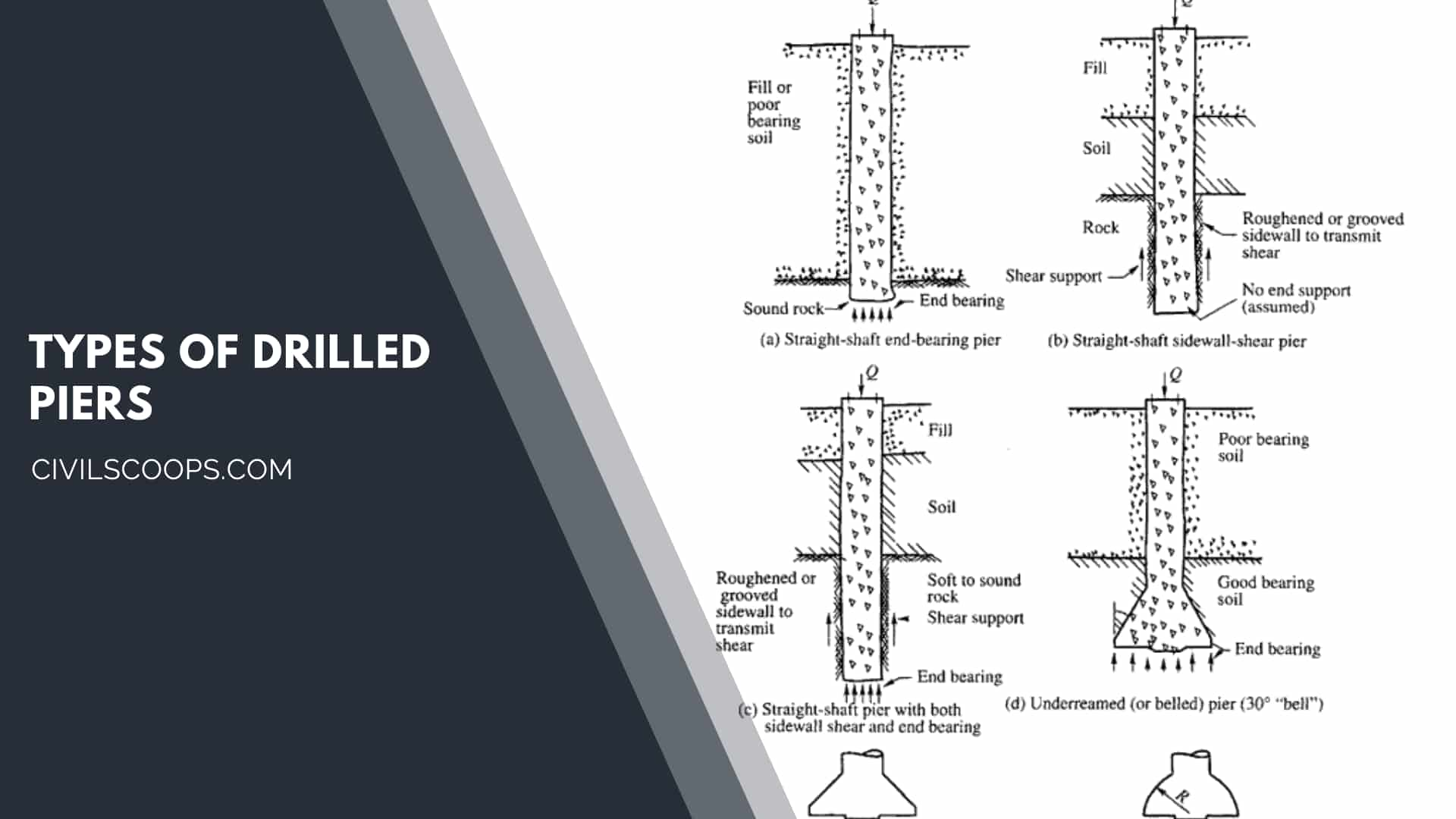
Drilled piers may be described under four types. All four types are similar in construction technique but differ in their design assumptions and in the mechanism of load transfer to the surrounding earth mass.
- Straight-Shaft End-Bearing Pier.
- Straight-Shaft Side wall Shear Pier.
- Straight-Shaft Pier With Both Sidewall Shera and End Bearing.
- Underreamed or Belled Pier.
1. Straight-Shaft End-Bearing Pier
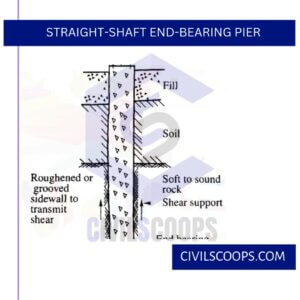
Straight-shaft end-bearing piers develop their support from end-bearing on strong soil, “hardpan” or rock. The overlying soil is assumed to contribute nothing to the support of the load imposed on the pier.
2. Straight-Shaft Side wall Shear Pier
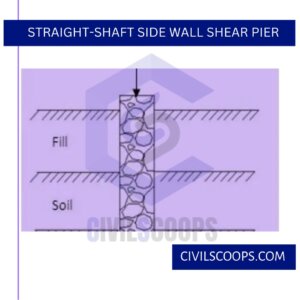
Straight-shaft sidewall friction piers pass through overburden soils that are assumed to carry none of the load and penetrate far enough into an assigned bearing stratum to develop design load capacity by side-wall friction between the pier and bearing stratum.
Also Read: 10 Different Types of Loads on Structures | What Are Structural Loads
3. Straight-Shaft Pier With Both Sidewall Shera and End Bearing
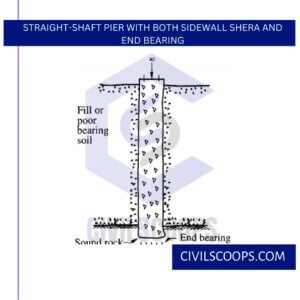
A combination of straight shaft side-wall friction and end bearing piers are of the same construction as the two mentioned above, but with both side-wall friction and end bearing assigned a role in carrying the design load.
When carried into rock, this pier may be referred to as a socketed pier or a “drilled pier with rock socket“.
4. Underreamed or Belled Pier
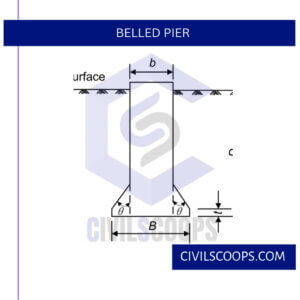
Belled or under reamed piers are piers with a bottom bell or underream figure. A greater percentage of the imposed load on the pier top is assumed to be carried by the base.
Advantages and Disadvantages of Drilled Pier Foundations
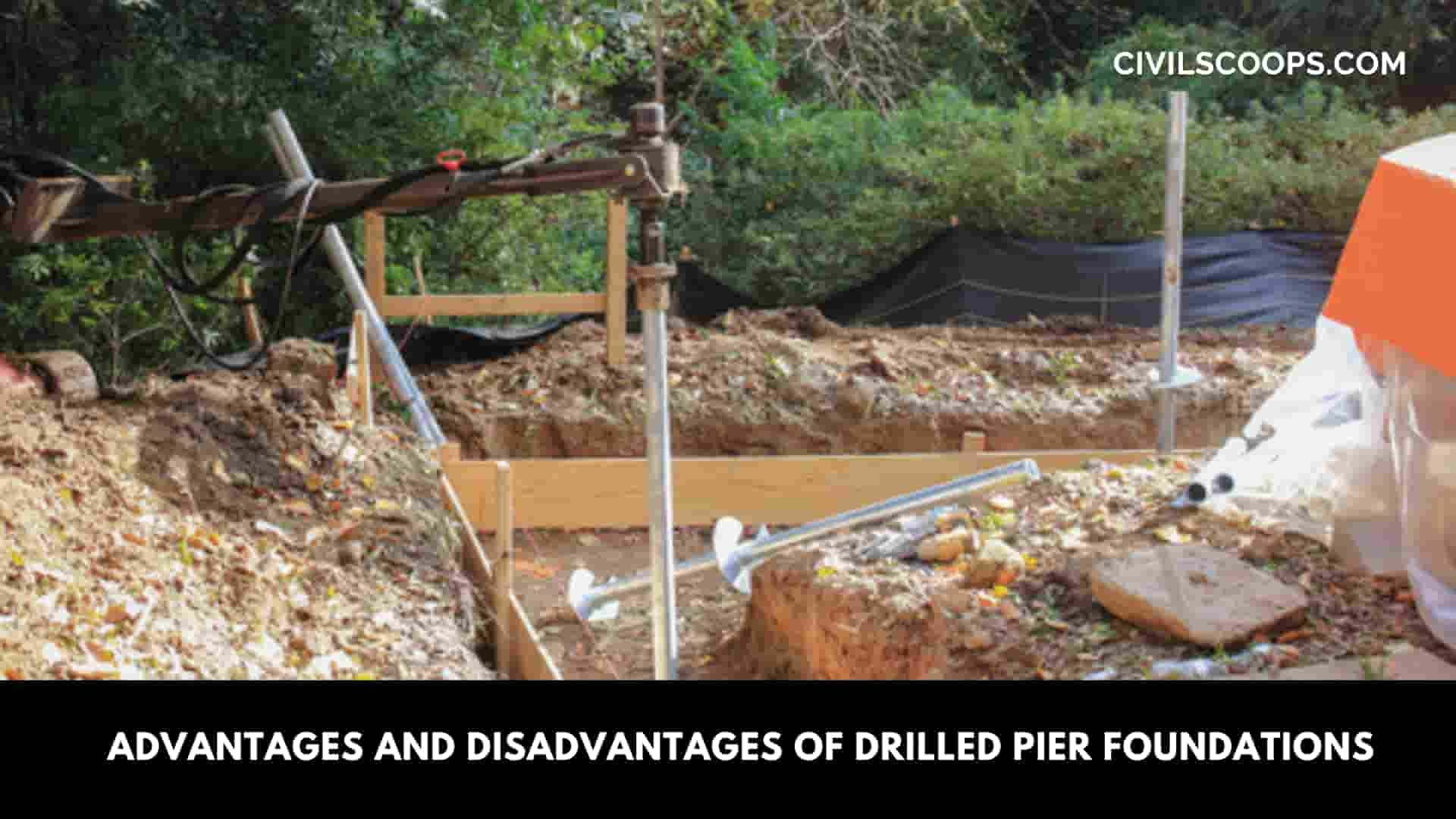
Advantages Drilled Pier Foundations:
- Pier of any length and size can be constructed at the site
- Construction equipment is normally mobile and construction can proceed rapidly
- Inspection of drilled holes is possible because of the larger diameter of the shafts
- Very large loads can be carried by a single drilled pier foundation thus eliminating the necessity of a pile cap
- The drilled pier is applicable to a wide variety of soil conditions
- Changes can be made in the design criteria during the progress of a job
- Ground vibration that is normally associated with driven piles is absent in drilled pier construction
- Bearing capacity can be increased by underreaming the bottom (in non-caving materials)
Disadvantages Drilled Pier Foundations:
- Installation of drilled piers needs careful supervision and quality control of all the materials used in the construction
- The method is cumbersome. It needs sufficient storage space for all the materials used in the construction
- The advantage of increased bearing capacity due to compaction in granular soil that could be obtained in driven piles is not there in drilled pier construction
- Construction of drilled piers at places where there is a heavy current of ground water flow due to artesian pressure is very difficult
Construction of Drilled Piers:
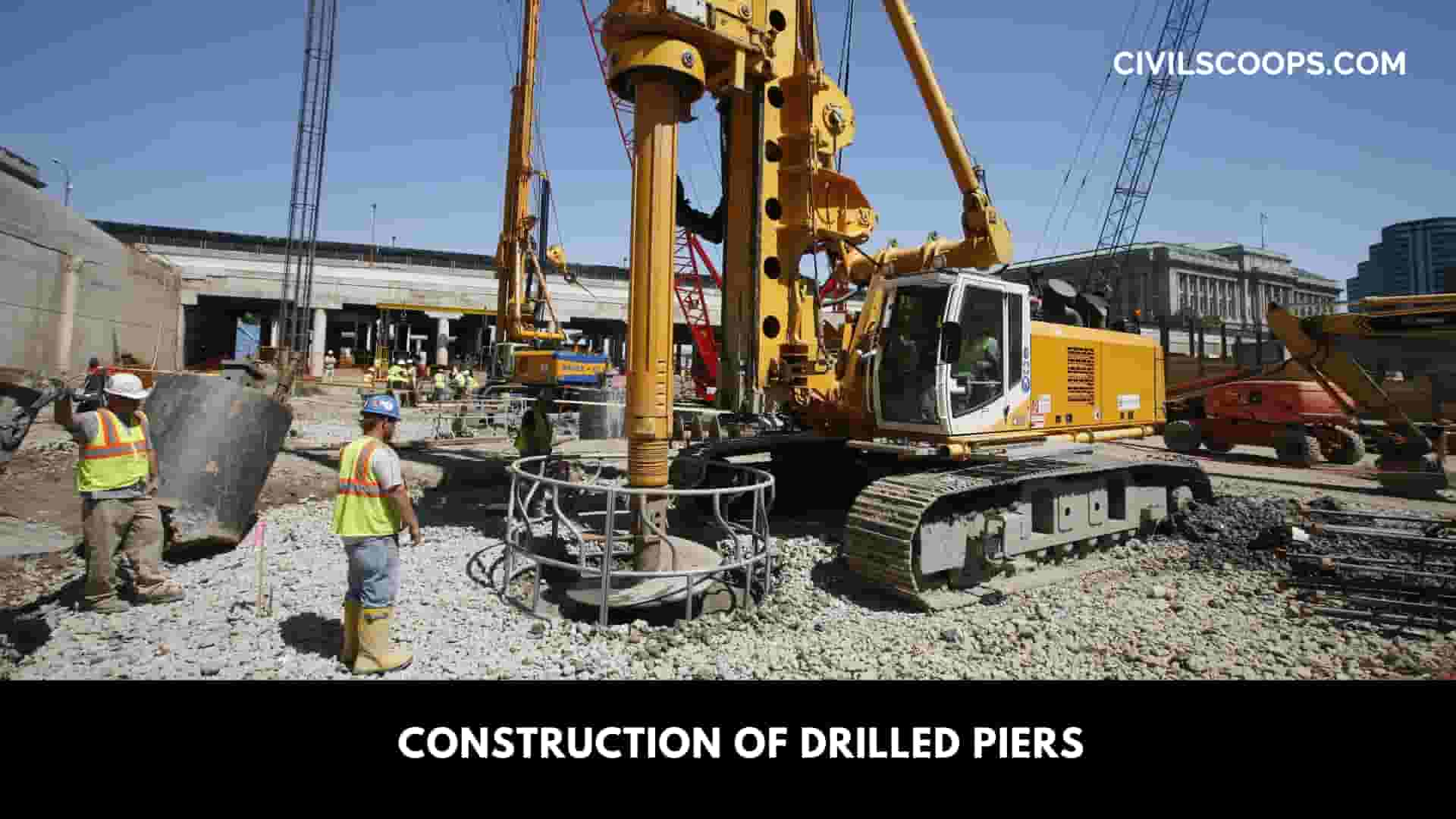
In the earlier methods like the Chicago method and Gow’s method, the drilling used to be done manually. The shaft excavations are presently done mechanically using augers.
When the excavation reaches the load-bearing stratum, the augers are replaced by underreaming tools to construct the bell, if required.
The casing is used to prevent caving in of soil as the bore-hole is advanced deeper into the soil. Sometimes drilling mud/bentonite slurry can be used in drilling through sandy and gravely soils instead of the casing.
The bottom of the hole must be inspected physically by descending to the bottom to make sure that the load-bearing stratum has been reached and also that the under reaming is properly done.
The construction details are very elaborate and these are carried out only by specialized construction agencies (Tomlinson, 1977, 2001).
Other Design Details of Pier Foundation:
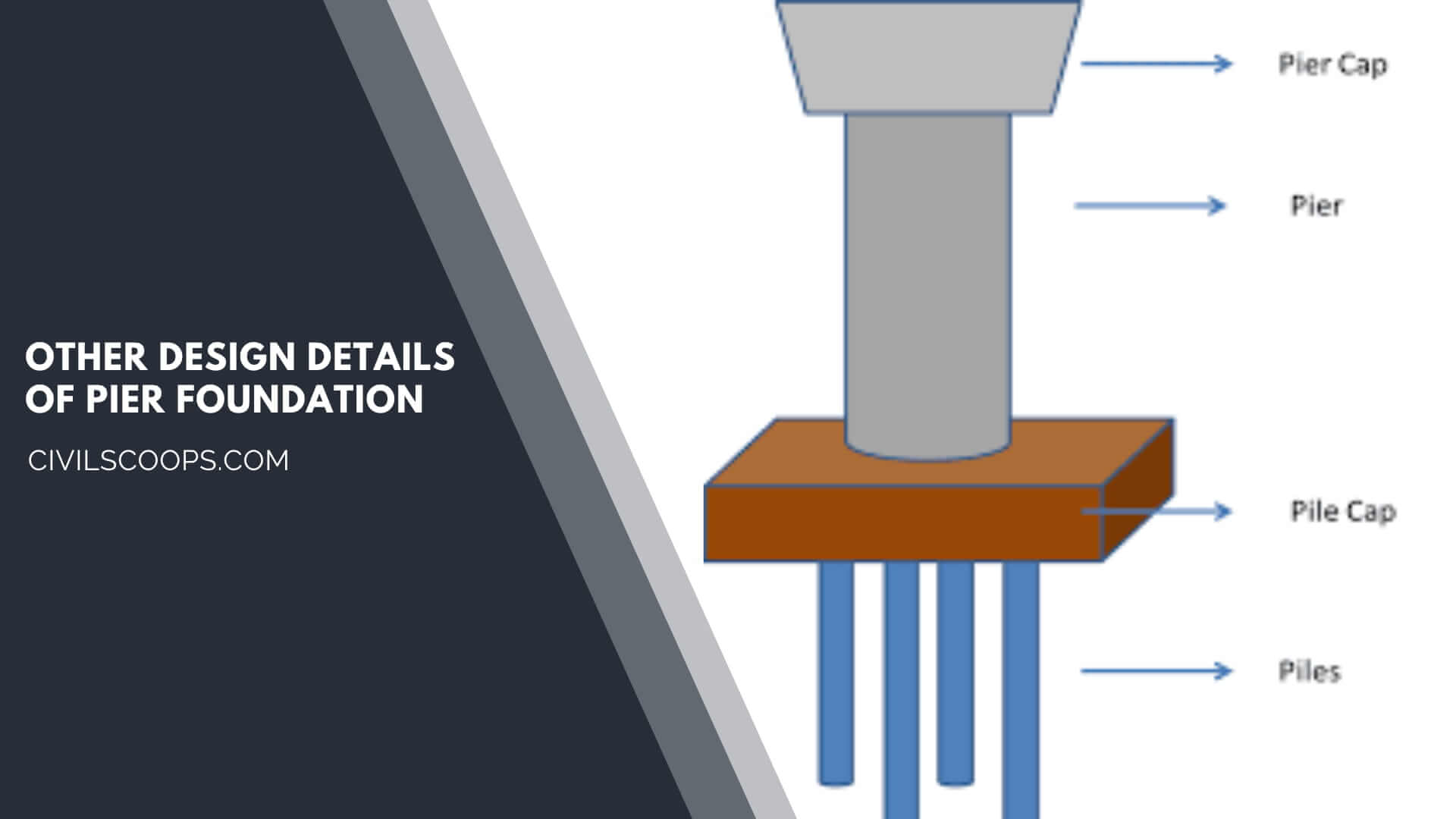
The following are the steps involved in the design of drilled piers or drilled caissons:
- The loads coming on top of the foundation are calculated. The weight of the pier is not usually included.
- Establish the water level and soil profile at the location of the pier.
- Identify the bearing stratum, that is, depth up to which the pier has to be constructed. Calculate the allowable bearing capacity.
- Check for the safety of stresses in weak soil layers if present below the pier.
- Check for settlements.
- Design the shaft, bell (if required), and the cap.
- Check lateral load capacity, bending stresses, and eccentricity.
- Check for the uplift force.
Most of the above steps are similar to those used in the pile foundations since drilled piers are essentially large diameter piles. However, a few additional approaches used in practice are given below.
[su_box title=”FAQ” style=”default” box_color=”#333333″ title_color=”#FFFFFF” radius=”3″ class=”” id=””]
What Is Pier Foundation?
A pier foundation is a series of vertical pillars or piles that transfer the building load to the soil. Beams are then built on top of these columns. They lift the house off the ground and are very popular in coastal regions where rising tides are a problem.
What Is a Pier Footing?
Pier footing transferred the load of the superstructure to the underlying soil or rock. It is constructed by digging a hole in the ground and then filling it with concrete or stone. It is also known as “Post foundation” of “Column Foundation”.
Types of Drilled Piers
- Straight-Shaft Side wall Shear Pier.
- Straight-Shaft Pier With Both Sidewall Shera and End Bearing.
- Underreamed or Belled Pier.
- Disadvantages Drilled Pier Foundations.
Drilled Pier Foundation
A drilled pier is a deep foundation system that uses a large diameter concrete cylinder constructed by placing fresh concrete and reinforcing steel into a drilled shaft. It is also called as a caisson, drilled shaft, Cast-in-drilled-hole piles (CIDH piles) or Cast-in-Situ piles.
Drilled Piers Are Designed to Carry?
In the most common design condition, a drilled shaft is designed to carry load by side friction in a rock socket. The rock socket should have a diameter 6 inches less than the shaft diameter and may be grooved or smooth depending on the type of rock encountered.
Are Piers Considered a Permanent Foundation?
Yes, when well maintained, foundation piers are considered a permanent foundation.
How to Make a Concrete Pier Foundation?
- Step 1: Layout the Foundation.
- Step 2: Prepare the site.
- Step 3: Mark the border.
- Step 4: Dig the Pier Holes.
- Step 5: Prepare the Fiber-Form Tubes.
- Step 6: Install the Tubes.
- Step 7: Mix and Pour the Concrete.
- Step 8: Cure the Concrete.
How Deep Should House Piers Be?
Piers can be square, rectangular, or circular, and diameter of piers is usually 6, 8, 10, or 16 inches. The depth of pier foundation is below the freezing depth, usually around five to six feet.
Caisson Vs Pile
Caissons are watertight structures made up of wood, steel or reinforced concrete built above the ground level and then sunken into the ground. Pile foundation is a type of deep foundation, in which the loads are taken to a low level by means of vertical timber, concrete or steel.
Pier Vs Pile
Piers are similar in size and shape. Piles are often used when the soil lacks firm strata, such as bedrock. Piles are usually meant for supporting greater loads, such as highway bridges. Piers are meant for smaller applications, such as sheds and small living units.
Types of Piers
- Wall type pier.
- Capped pile pier.
- Tee type (hammerhead) pier.
- Cap and column pier.
- Multiple columns (no cap)
How Long Do Concrete Piers Last?
Generally, concrete piers can last 75+ years without issue.
How Much Weight Can a Concrete Pier Support?
The number and size of the piers depends on how much weight the underlying soil can hold. The standard design load in the International Residential Code assumes a 40-pound live load; dead load is commonly calculated at between 10 and 15 pounds per square foot, depending on the materials used for construction.
[/su_box]
[su_note note_color=”#F2F2F2 ” text_color=”#333333″ radius=”3″ class=”” id=””]
Like this post? Share it with your friends!
Suggested Read –
- What Is Plaster | Methods of Plastering
- All About Drywall Water Damage Repair
- What Is Glass | Types of Glass Used in Construction | Qualities of Glass | Advantages & Disadvantages of Glass
- What Are the Differences Between Shear Slump and Collapse Slump in Slump Test?
- All About Asphalt Flooring | What is Asphalt Flooring | Asphalt Flooring Used | Asphalt Flooring Advantages and Disadvantages
[/su_note]
Originally posted 2023-04-05 10:30:56.
